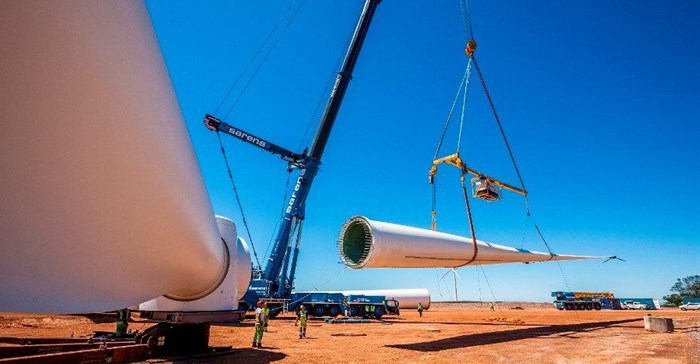






With this view, a broad segment of industry players convened online to get insights from sector heads and thought leaders, in a capacity building webinar organised by the South African Wind Energy Association (Sawea) and the South African Photovoltaic Industry Association (Sapvia).
“The presentations highlighted different components, both solar PV and wind, that have local manufacturing potential and exposed participants to valuable knowledge about how to engage with original equipment manufacturers (OEMs) with the purpose of participating in the value chain.
"Participants also learned different strategies that local businesses can use to enter the renewable energy manufacturing value chain, such as being a local subsidiary of a foreign company, manufacturer under OEM IP local assembler of components, in addition to other valuable insights that will help our sector draw greater economic value to our shores,” said Ntombifuthi Ntuli, CEO, Sawea.
“While exact quanta from assumptions may vary, the opportunity as a starting point is worth pursuing,” said Francis Jackson, special advisor at GreenCape.
His presentation unpacked opportunities and barriers, such as: Uncertainty on market consistency: Technical and systems readiness; Availability of climate finance; Price competitiveness of local supply; Investment attractiveness in energy transition hotspots; and match of skills demand and availability, amongst others.
Addressing low hanging fruit that can drive economic stimulation by the sector he identified wind tower and blade manufacturing; nacelle assembly; wind tower internals; solar PV module assembly; and a number of options should the solar sector move into vertical integration in the module value chain, such as glass.
Considering what it will take for South Africa to achieve economies of scale to enable locally manufactured components to be competitive at a global scale, Jackson said, “It is to be confirmed whether we are well positioned be competitive at a global scale in all components. The first step is to ensure we make the most of our local opportunity and establish building blocks for opportunities to participate in export. Global value chain players would be well placed to make the business case as they build capacity to service the local market. There will be certain parts of the supply chain that may emerge to be more strategically placed to cultivate capacity in South Africa than others in order to be able to compete internationally.
“It will take a suite of systemic interventions by stakeholders from industry through government and labour. Notable amongst these is rebuilding market certainty on the back of sufficient scale. Contributing factors may include increasing off-taker diversity; growth in demand through sector coupling, such as green hydrogen for export; consistent review and implementation of policy; refinement to bid window timing; and working in ways with which to allocate risk around procurement consistency and timing."
The fifth bid window (BW%) for independent power producers, which closes on 4 August, 2021, retains a 40% local content threshold, in line with previous rounds.
For the first time, the Renewable Energy Independent Power Producer Procurement Programme (REIPPPP) has introduced designated local content, which, over and above the threshold, requires bidders to procure specific components locally. Should these components be unavailable, bidders can apply for an exemption, which needs to be lodged with the Department of Trade, Industry and Competition (DTIC).